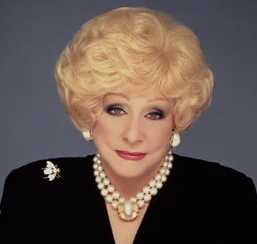In Recognition Or Doom – Failing To Recognize Outstanding Performance Is A Colossal Mistake we talked about how a lack of appreciation can lead to ruin—just look at Benedict Arnold, whose betrayal of the American cause was driven in large part by feeling overlooked and undervalued. Today, let’s flip that coin and talk about someone who built an empire by doing the exact opposite: Mary Kay Ash, the legendary founder of Mary Kay Cosmetics.
At the core of Mary Kay’s success wasn’t just a breakthrough in beauty products—it was an unwavering commitment to recognizing people. She made it her mission to ensure that everyone who worked with her felt seen, appreciated, and inspired.
The Personal Touch: Birthday Cards and Handwritten Notes
Even as her company grew to over 850,000 employees, Mary Kay Ash famously sent out personalized birthday cards to each one. That’s not a typo. Personalized. Every. Single. One. She didn’t outsource appreciation. She didn’t automate it. She made it personal—because she believed that recognition only works when it feels genuine.
Her philosophy was simple: “People don’t care how much you know until they know how much you care.”
And that wasn’t just a nice sentiment—it was smart business.
Incentives That Inspire Action
Mary Kay’s legendary incentive programs—think sparkling jewelry, luxury vacations, and of course, the iconic Pink Cadillac—weren’t just about glitz. They were symbols. They told her team, “You matter. You’re worth celebrating.”
These weren’t participation trophies—they were rewards for excellence. A Pink Cadillac wasn’t just a car; it was a status symbol that said, “You crushed it.” It created a culture where people weren’t just working a job—they were striving for recognition. They were proud to represent the brand because the brand was proud to represent them.
And it worked. Big time.
Mary Kay’s approach to leadership went against the grain of traditional management—and that’s exactly why it resonated so deeply. Employees weren’t motivated by fear of failure; they were inspired by the promise of reward and recognition.
Related Post: Why What Got You Here Won’t Get You There (And What to Do About It)
Recognition Is a Two-Way Street
Mary Kay also believed in the power of ownership. She understood something many leaders still miss: people support what they help create. That’s why she regularly asked her employees for input. Whether it was shaping incentive programs or gathering feedback on new initiatives, Mary Kay wanted her team involved in decision-making.
When people feel like they have a voice, they take ownership. And when they take ownership, they perform at a higher level. It’s not magic—it’s psychology.
This participatory leadership style aligns closely with Daniel Pink’s findings in Drive: The Surprising Truth About What Motivates Us, where autonomy, mastery, and purpose are identified as key drivers of motivation. Mary Kay intuitively understood this decades earlier.
Building Emotional Bank Accounts
Stephen Covey, author of The 7 Habits of Highly Effective People, talks about the concept of the “emotional bank account.” Every positive interaction is a deposit. Every slight or ignored contribution is a withdrawal.
Mary Kay was a master at making deposits—birthday cards, thank-you notes, Pink Cadillacs. Her team, in turn, made their own deposits back into the company through Herculean effort, loyalty, and passion. That’s not just company culture—that’s emotional ROI.
$5,000 and a Vision
Mary Kay started her business with just $5,000 and a dream—not just to sell cosmetics, but to create a company where people, especially women, could thrive and be celebrated.
She turned that vision into a multibillion-dollar enterprise. Not by being cutthroat. Not by demanding results at any cost. But by putting people first and making recognition a business strategy—not an afterthought.
What’s Your Recognition Strategy?
Many business owners and managers believe compensation alone is enough. But as Mary Kay Ash demonstrated, appreciation is the real currency of motivation. When employees feel valued, they give more. They stay longer. They become your greatest evangelists.
Recognition doesn’t have to mean pink Cadillacs. It can be as simple as a handwritten note, a public thank-you, or asking for input on a new idea. What matters is that it’s real. And that it’s personal.
So, do you have a first-class recognition program in your business? If not—what’s stopping you?












